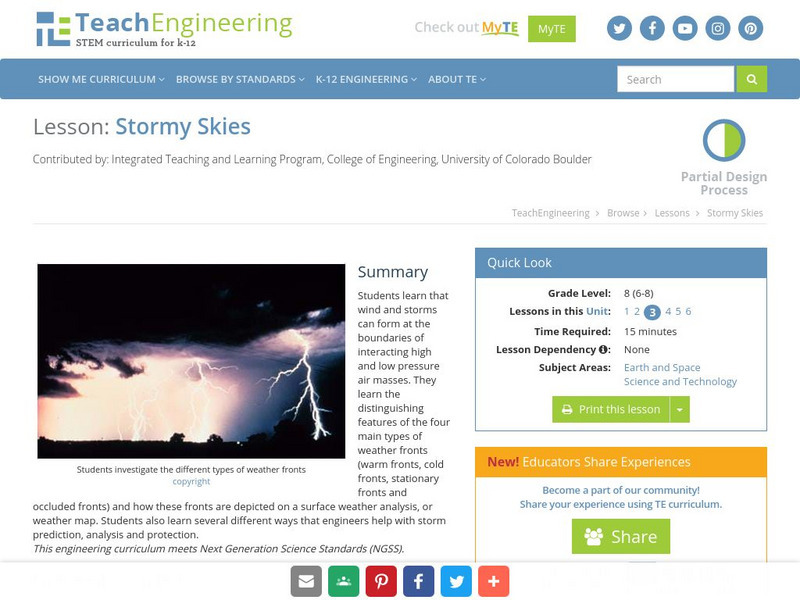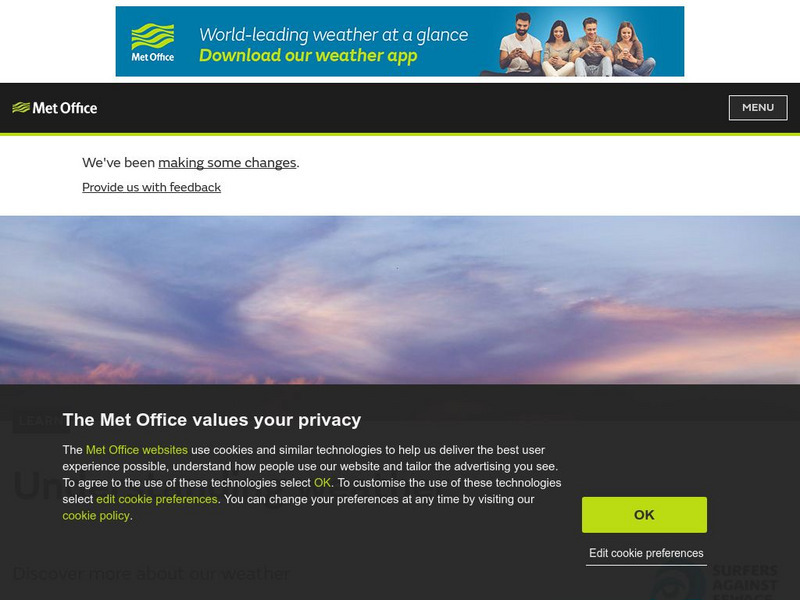American Geosciences Institute
American Geosciences Institute: Cold Front and Warm Front
Read and understand the differences between a cold and a warm front.
University Corporation for Atmospheric Research
Ucar: Modeling a Weather Front
In this demonstration, students observe how temperature changes can create a weather front, in particular how the mixing of warm and cold air can produce thunderstorms.
Science Struck
Science Struck: Important Facts About the Stationary Front
Read about how a stationary air front forms when warm and cold air masses meet but neither can overpower the other. Explains what its characteristics are and the impact it can have on weather conditions.
TeachEngineering
Teach Engineering: Stormy Skies
Students learn that wind and storms can form at the boundaries of interacting high and low pressure air masses. They learn the distinguishing features of the four main types of weather fronts (warm fronts, cold fronts, stationary fronts...



